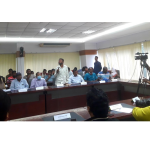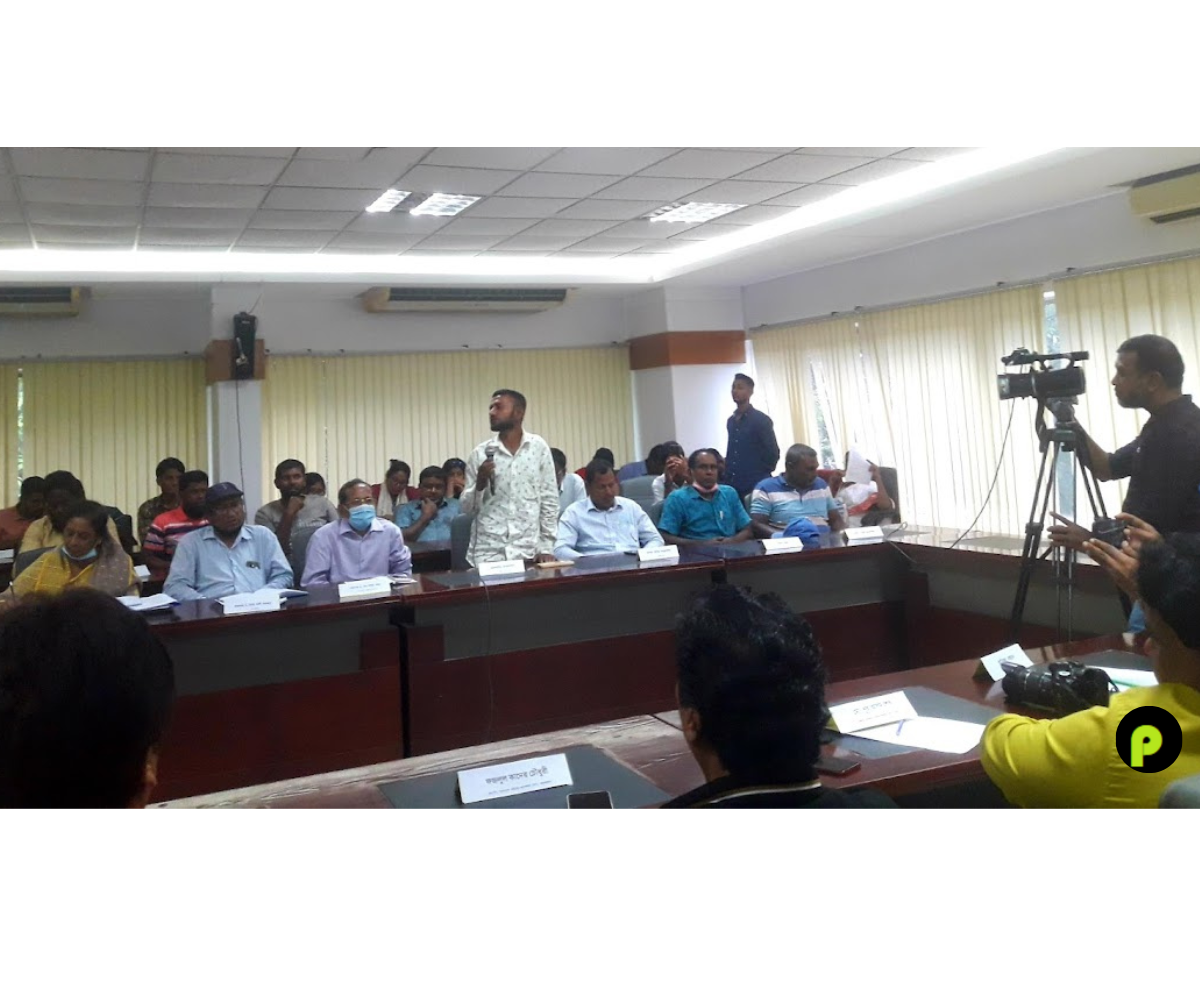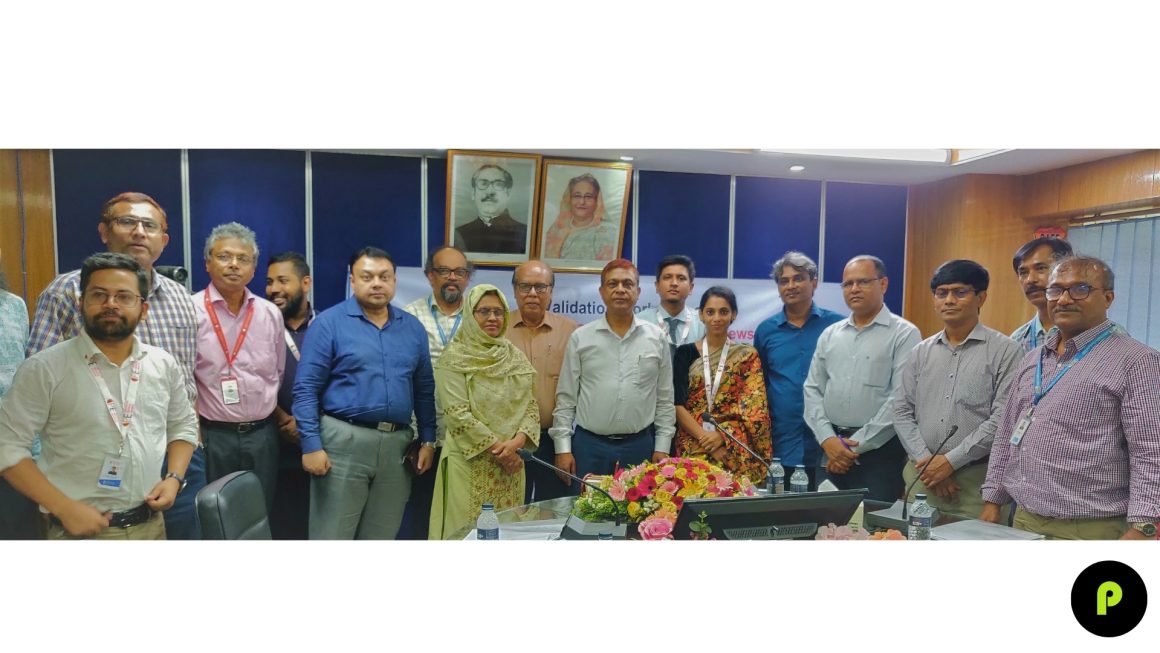The people of Bangladesh have a long experience combating various natural hazards such as floods, cyclones, droughts, tidal surges, tornadoes, river erosion, high arsenic contents of groundwater, water logging, and increasing water and soil salinity. But in recent times, the increasing intensity and magnitude of disasters due to climate change, and the occurrence of unprecedented disasters have put significant stress on the lives of poor people.
Bangladesh with its wider inequity in the social and economic settings has negatively impacted the coping capacity of the poor people. Disaster Preparedness and Response (DPR) has been prioritized, as one of the core development programs of the Bangladesh government.
The current DPR program has evolved since 1993. In the long continuation of building a disaster-resilient country, the GoB established the Disaster Management Bureau (DMB) in 1993, developed Standing Orders on Disaster (SOD) in 1997, National Disaster Management Plan (2010-2015) and revised Standing Orders on Disaster (SOD) in 2010, at last, the Disaster Management Act was enacted in 2012. In 2012, GoB established the Directorate of Disaster Management through the passage of the Disaster Management Act. To meet the demand of changing scenarios of climate change and disaster, GoB updated Standing Orders on Disaster (SOD) in 2019 and also revised National Disaster Management Plan (2025-2030).
One of the remarkable steps under this act is to transform The Directorate of Relief and Rehabilitation into the Department of Disaster Management with wider responsibility. To manage the paradigm shift in disaster management, a disaster management regulatory framework is established under which the Bangladesh Disaster Management Framework is implemented, and in which work of Ministries, Departments, NGOs, and civil society are undertaken. The regulatory framework provides the relevant legislative, policy, and best practice framework under which the activity of Disaster Risk Reduction (DRR) and Emergency Response Management in Bangladesh is managed and implemented.

Under Disaster Management Act, which was enacted in 2012, the government has formulated disaster management committees (District Disaster Management Committee, Upazila Disaster Management Committee, Union Disaster Management Committee, City Corporation Disaster Management Committee, Pourashava Disaster Management Committee, District/Upazila Health Management Committee) and also formulated City Corporation Disaster Response Committee, Pourashava Disaster Response Committee, Upazila Disaster Response Committee, and District Disaster Response Committee. The government has also initiated District Disaster Management Fund at the district level, which is headed by the Deputy Commissioner (DC) which is mentioned under the section “Funding requirement and resource mobilization (108)”. In the updated SOD, the government also formulated Ward Disaster Management Committee in each Ward of the Union level to ensure prompt response in disaster rescue and rehabilitation.
In 2017, Bangladesh faced a long-lasting flood due to the rise of water levels in the various rivers in the northern part of the country due to heavy rainfalls as well as water flow from the upstream hills in India. The situation resulted in the inundation of the river basin areas in the northern parts of Bangladesh. In the late March of 2017, a flash flood hits the haor areas of Sunamganj and it extends all over the six haor districts in Bangladesh.
In mid-July 2017, a devastating flood hit Kurigram at first and it extended over Tangail during mid-August. It was also found that by 18 August, the flood had extended up to Faridpur district and caused a death toll of 93 people (government source) /107 (by non-government sources) and it affected approximately 5.3 million people in 22 districts by this time. After the distressing flood of July 2017, second-time monsoon flood began on 12 August affecting 31 districts named Dinajpur, Nilphamari, Lalmonirhat, Kurigram, Thakurgaon, Panchagarh, Gaibandha, Bogra, Sirajganj, Jamalpur, Sunamganj, Netrokona, Rangamati, Brahmanbaria, Faridpur, Rajbari, Jessore, Mymensingh, Tangail, Sylhet, Sherpur, Dhaka, Moulvibazar, Naogaon, Comilla, Rangpur, Manikganj, Madaripur, Joypurhat, Shariatpur and Natore.
It disrupted people’s normal life. It was estimated that 1,200 unions of 183 upazilas under 31 districts were affected and 8,746 villages were also affected. A total of 2, 38,843 people fully and 65, 36,509 people partially was affected, 50,042 households fully and 13, 05,257 households partially affected, 71628 houses fully and 5, 48,175 houses partially damaged. A total of 121 people died. 15,529 hectares fully and 5,62,594 hectares partially agricultural land inundated, 34 full and 3,134 partially educational institutions damaged, 403km of the road fully and 4,432.38 km of road partially damaged, 268 bridges and 96 km of embankment damaged. But there was no effective response and recovery interventions were in place by the committees and fund channeling wasn’t maintained properly.
In the Upazila Disaster Management Committee (UZDM), Upazila Chairman plays the role of President. According to the Upazila Chairman of Gangachara Upazila of Rangpur district, the committee has no work without meeting during the disaster. He mentioned, “Though I am the president of UZDMC, I have no role. During the disaster, I only preside at the emergency meeting of the Deputy Commissioner (DC) as president of the committee. All of the disaster response and recovery activities are run by DC and Project Implementing Officer (PIO).” He also added that there is no fund allocation for the Upazila Parishad (UP) to responding emergencies during a disaster.
In this connection, the DRRO of Satkhira said, “Ministry of Disaster Management does not allocate yearly funds for the District Disaster Management Fund and so that’s why we cannot provide any funding to the Disaster Management Committee at District, Upazila, the Union level. The government has given us a mandate for the mobilization of the necessary fund for the implementation of the plan on a priority basis to manage the disaster, but not enough allocation and so why cannot take regular actions in disaster management (DM).
In emergency response, relevant government departments, ministries, and local governments allocate appropriate resources and funding for DM and then we can do something in this regard”. He urges monthly additional financial assistance for DM activities from the National Disaster Management Fund. He also said if the government allocates some financial support every month for disaster management as well as a disaster management committee at district, upazila, union, ward, pourashava, and city levels, then I think the disaster management committee will work properly and disaster management activities will run smoothly by which we may ensure a disaster resilient community.” The DRRO of Sunamganj district added that through government provides regular allocation but disaster vulnerability does not consider. All subdistricts get similar allocation so despite the highly flood-vulnerable district, we cannot support all of the flood-affected households regularly.











